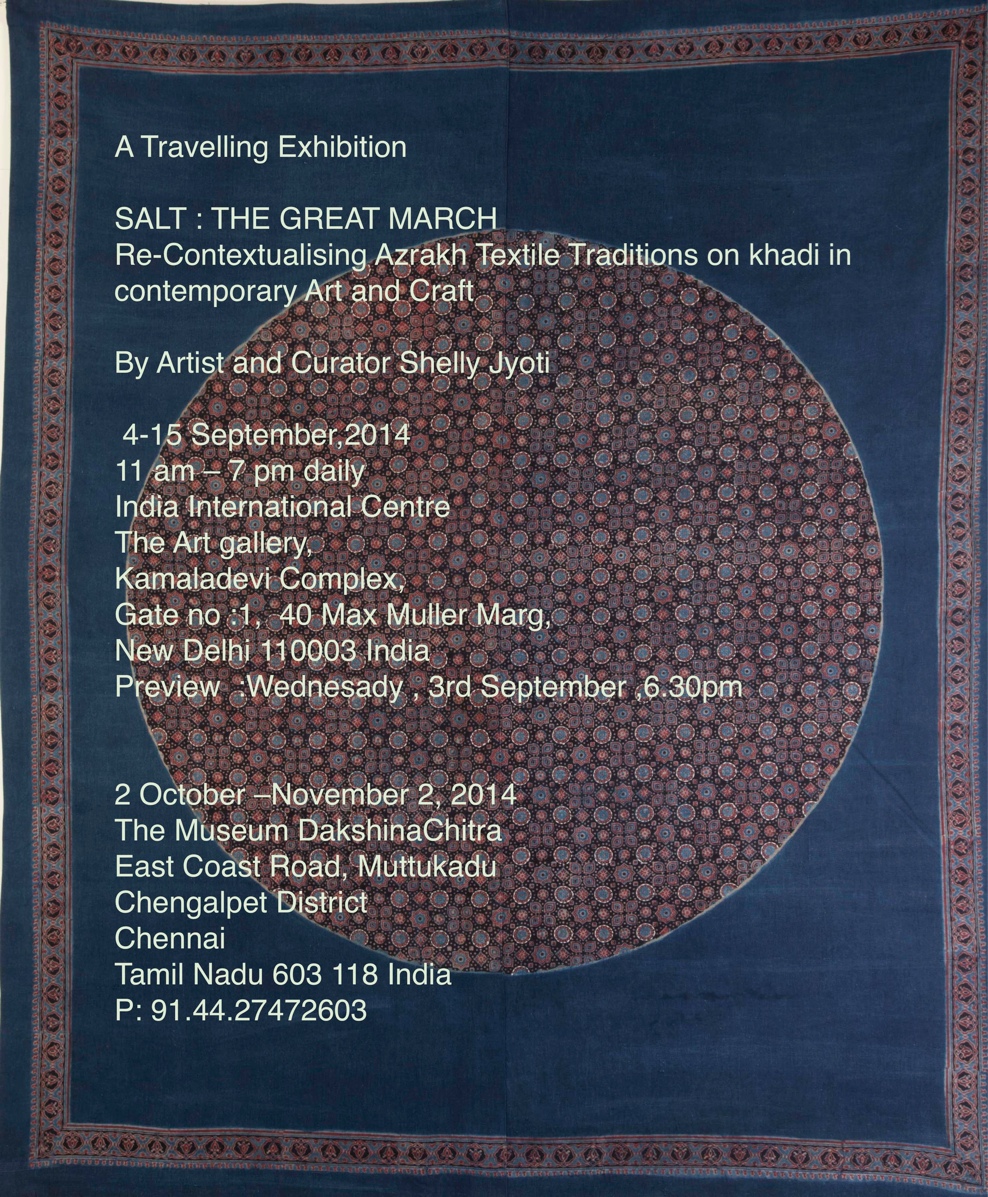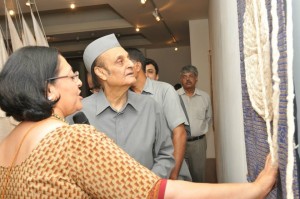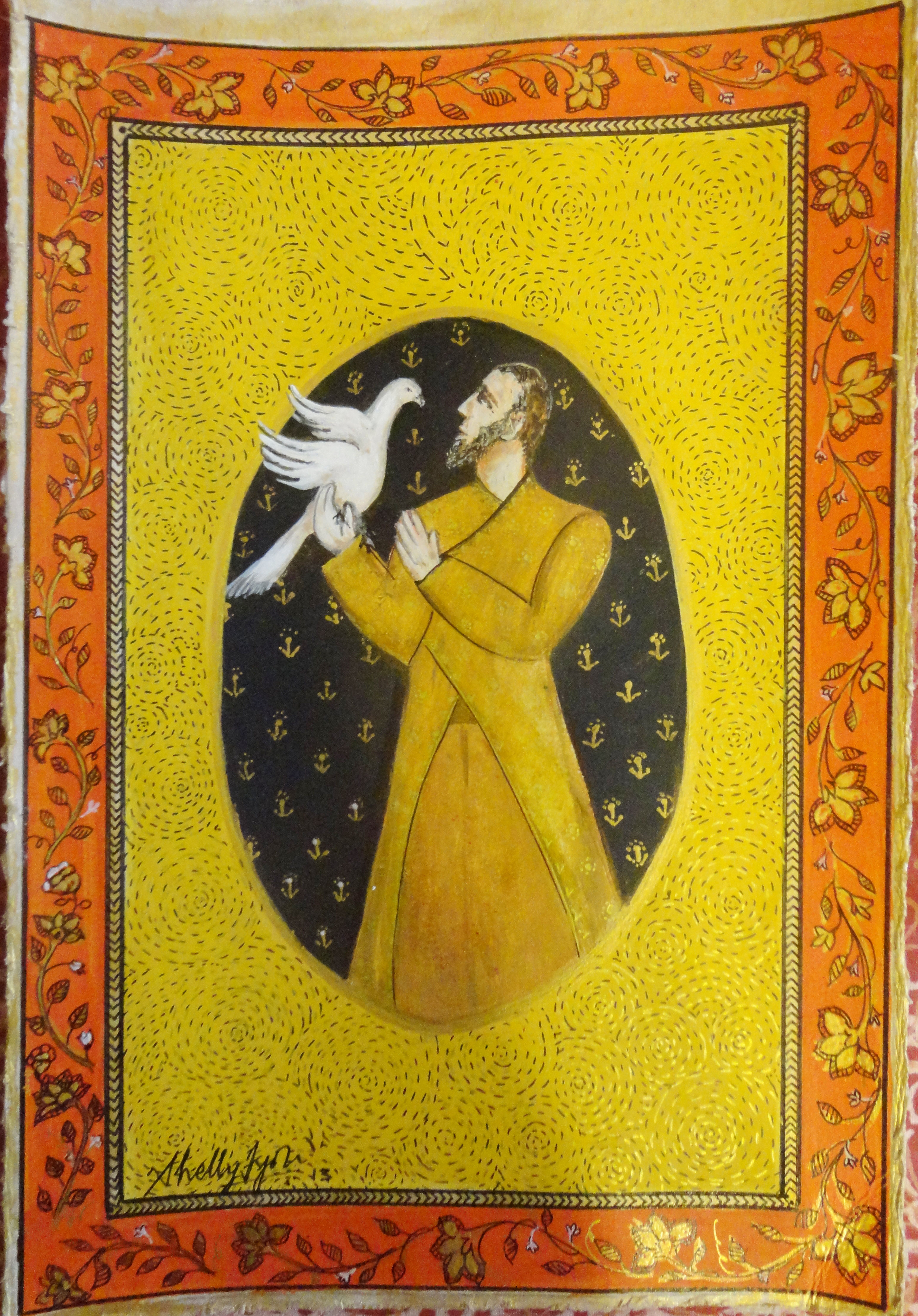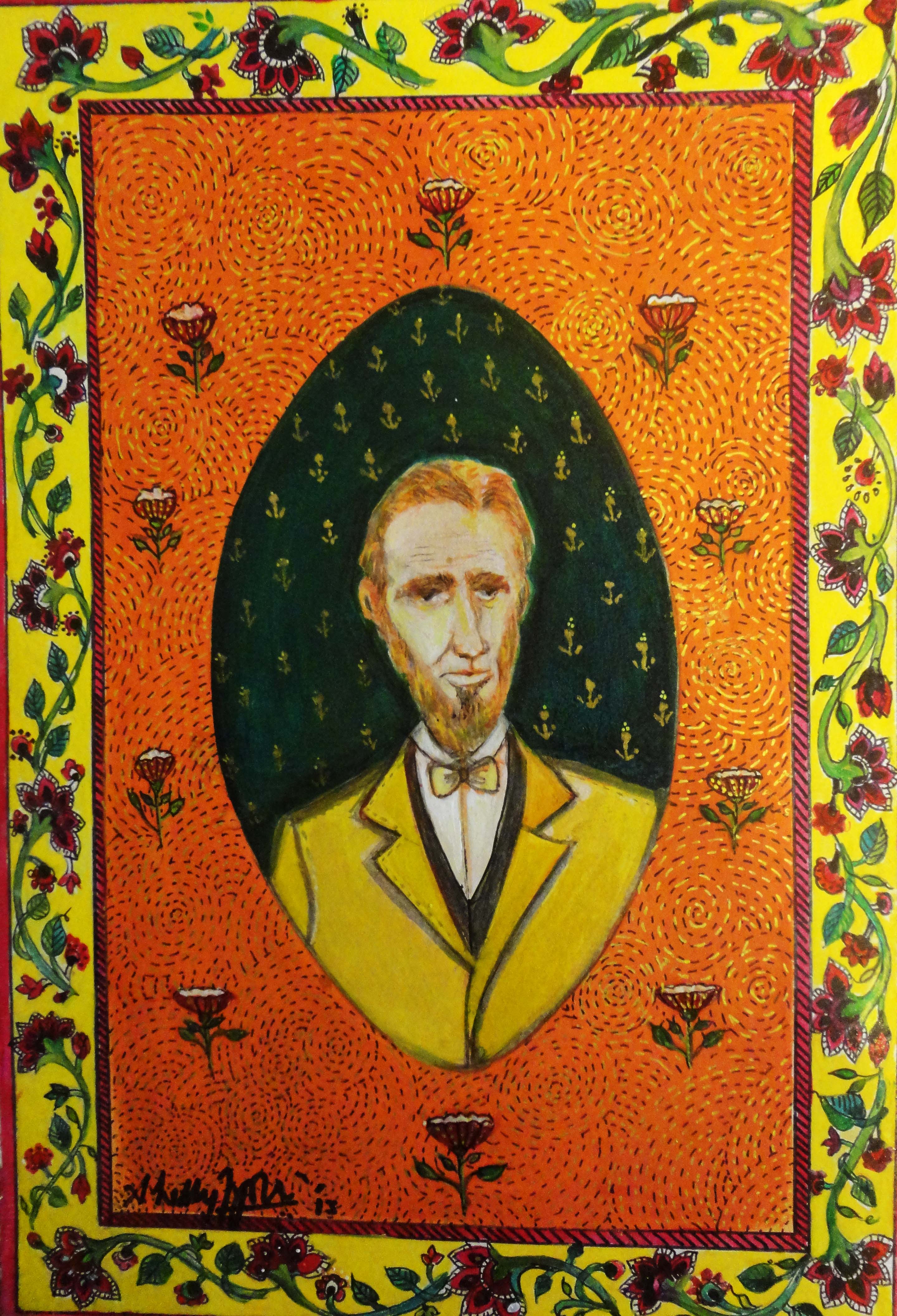NEWSLETTER
SALT:THE GREAT MARCH -(A visual Art Project 2013-15)
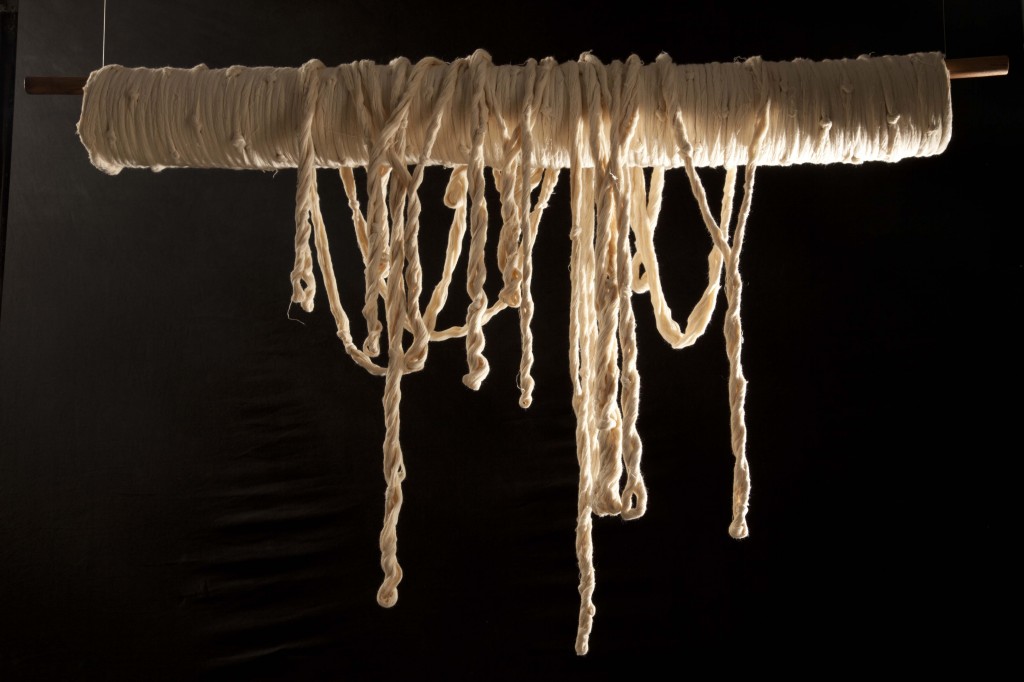
Salt:The Great March Re-Contextualising Azrakh Traditions on Khadi in Contemporary Art and Craft 2013-15
By Shelly Jyoti
Overview:
Salt: The Great March 2013-15 has been exhibited at Indira Gandhi National Centre for ArtsIGNCA, New Delhi (Sept 2013) ;India International centerIIC, New Delhi (Sept 2014);The Museum Dakshina chitra, chennai (Oct-Nov 2014); Azad Bhavan Gallery , Indian Council of cultural relations ICCR, New Delhi (January 2015)
The Salt March series explore salt as a symbol of non-violence. The project is inspired by the Gandhi’s theory of satyagrah – a challenge to ones own truth with stress on self-purification, self-examination and self-assessment. “Salt” series draws upon the history of India’s colonial past and Mahatma Gandhi’s 1930 Dandi March, which began the Salt Satyagraha and became an important part of the Indian independence movement. Within the Salt March series-khadi is re-contextualized as a contemporary social movement visualized through art and traditional craft materials and processes, seeking out the possibilities of bringing the khadi spirit into our daily lives.
The “Salt” series is a continuation of Jyoti’s earlier series, ‘Indigo Narratives (2008-14) that were inspired by an anti-colonial, nonviolence movement, 1917-18, Gandhi’s first non-violence protest for indigo farmers in India.
Shelly Jyoti’s present body of work features five site-specific khadi fabric installations including clothing, 35 artworks utilizing Ajarkh textile traditions on khadi fabric and spoken poetry video film.
Important E links
E CATALOG PUBLISHED BY ICCR http://issuu.com/shellyjyoti/docs/shelly_jyoti__16_to_21_jan_catalogu/1?e=6187501/10933769
E CATALOG PUBLISHED BY IGNCA
http://issuu.com/shellyjy
AN INTERVIEW ON SALT MARCH AT THE MUSEUM , CHENNAI https://www.youtube.com/watch?v=5L3YLADTjBM
ON THE MAKING OF SALT:https://www.youtube.com/watch?v=XO670z2yqxs
INTERVIEW BY TV INDIA ‘INDIA CALLING’ https://www.youtube.com/watch?v=TZbIbRpOTxs
MULTI MEDIA POETRY VIDEO ART https://www.youtube.com/watch?v=WXl8bgjmA7Y
ARTISTS BIOGRAPHY https://shellyjyoti.com/about/biography/
ARTIST PORTFOLIO https://shellyjyoti.com/portfolio/
ARTIST PRESS &MEDIA https://shellyjyoti.com/press/
ARTISTS BLOG:https://shellyjyoti.com/blog/


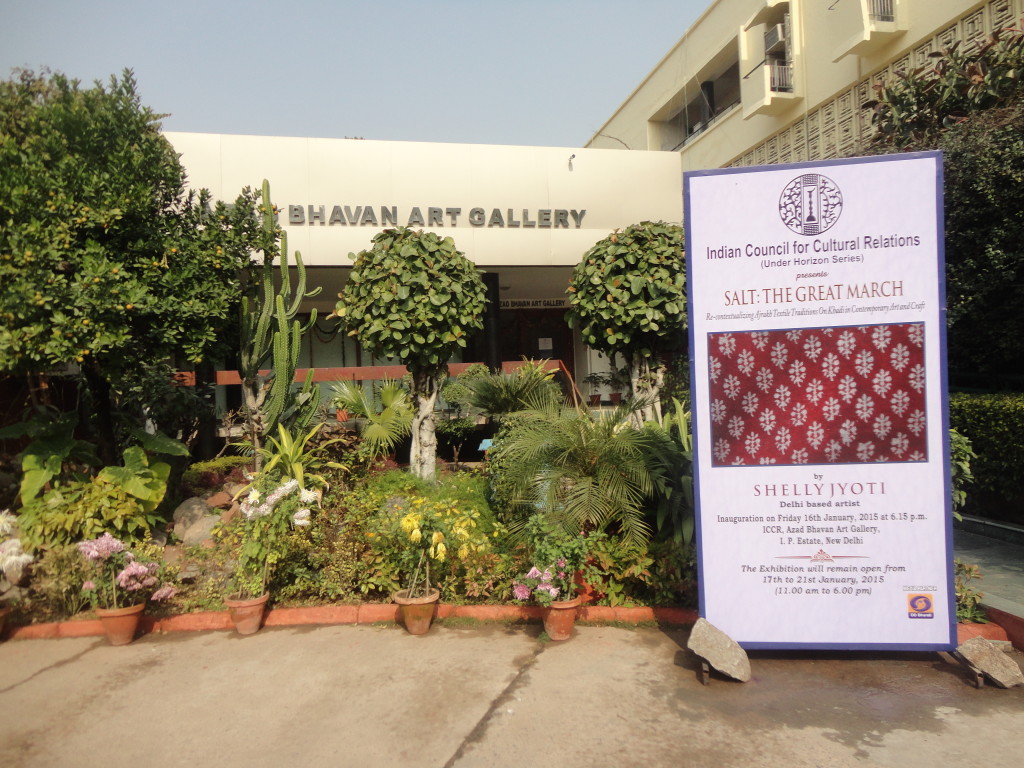




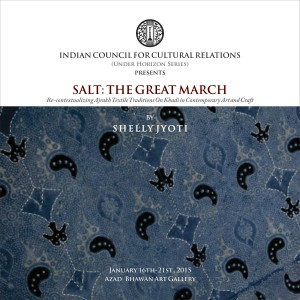

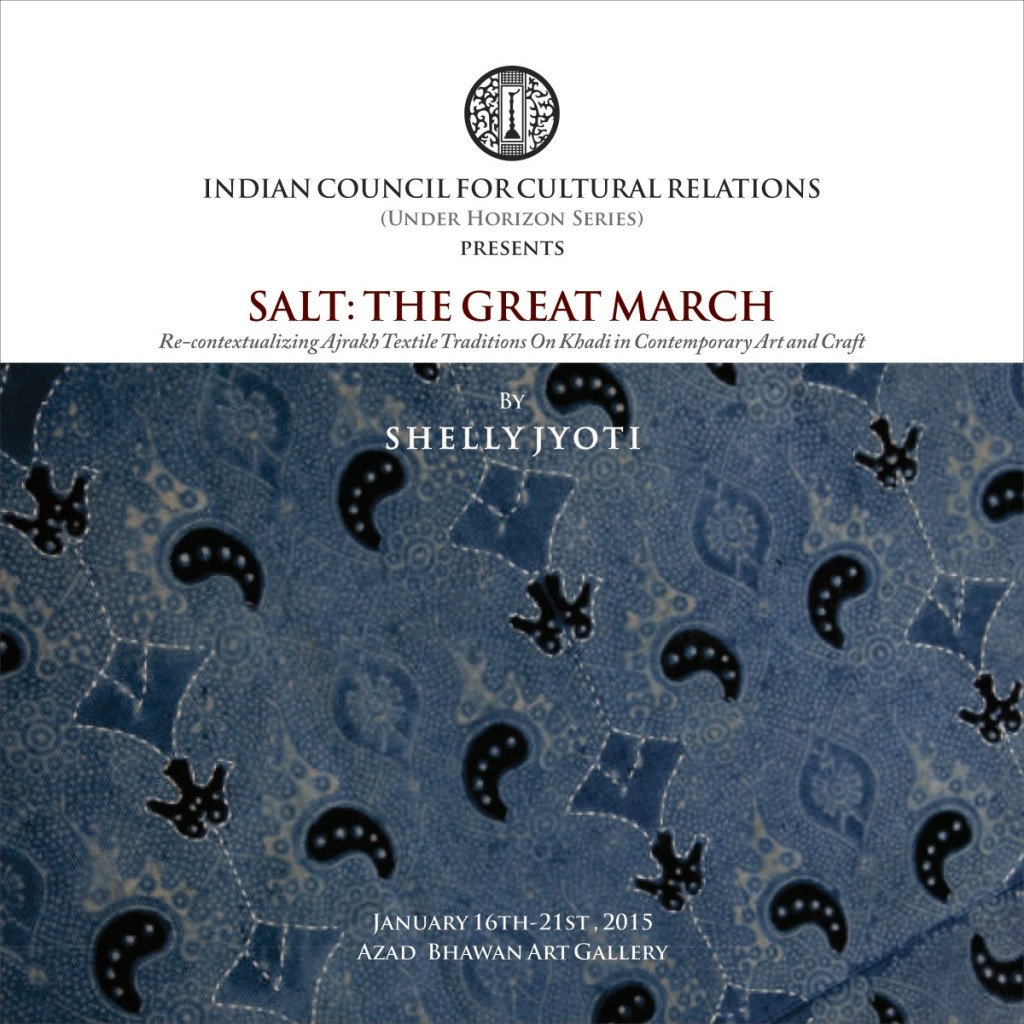 INVITE
INVITE


